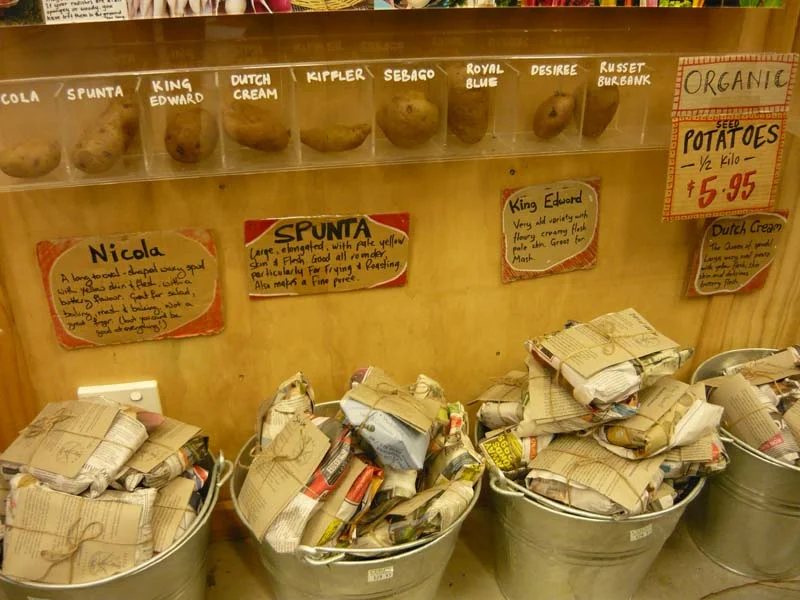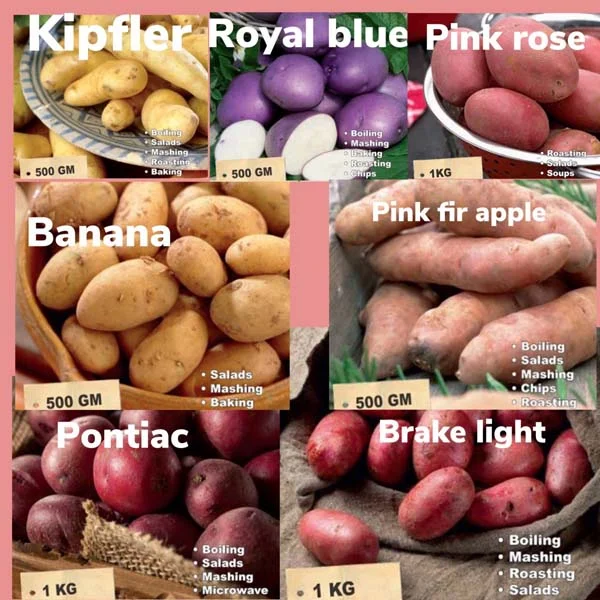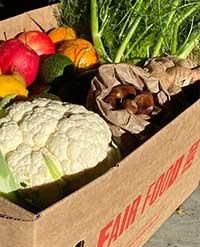Growing Potatoes
Potatoes are one of the easiest and most productive backyard crops. Plant in late Winter to early Spring, but if you are planting early remember that potatoes are susceptible to frost, so once their tops have come up, they will need protection on frosty nights.
Cut your potatoes into pieces (each chunk must contain an ‘eye’) at least a day before planting to allow the cut surface to seal. After the initial watering-in, don’t water until the shoots have appeared, and then only enough to keep the growing medium just moist. Once tubers begin to form, it is key to prevent them being exposed to any sunlight, which will turn them green and toxic. This is one reason for all the mounding of soil and layering of straw you are about to read about, but the other reason is that more and more potatoes will form along those stems you have covered over, enabling harvests of up to 7kg per potato planted!
Harvest your potatoes once the plants have started to yellow and wither (14-16 weeks) – this is essential if you want to store them, as their skins will have reached full thickness by then. Otherwise you can have a sneaky feel around in growing medium, and gently pull out a few early ones after 10 weeks or so.
In-ground growing
Dig 20cm deep trenches into loose organic matter-rich soil, and drop a spud chunk in every 40cm. Rake the soil back over to cover, top the whole area with a 5cm layer of well-rotted manure (sheep is perfect), and ideally add a handful of blood and bone mixed with a heaped spoonful of potash per square metre. Cover with a 2cm layer of straw mulch and water in well. Once the tops are up, usually in about 3 weeks, you can either hill up the soil from between the rows to cover them, topping with another layer of straw to prevent the soil washing away, or simply cover the whole lot with more straw mixed with some more manure (instead of manure you could use compost mixed with a sprinkle of blood and bone).
On-ground growing
Essentially as above, but instead if digging trenches, you start by mowing any grass or weeds (leave them where they fall), and laying down about 6 sheets thickness of wet newspaper on top them. Place your potato chunks at 40cm spacings over the area, and cover them with about 50cm thickness of straw. Top this with the same layers of manure, blood and bone and potash as above, but in this case the blood and bone and potash are much more important, as they will aid in breaking down the straw into a perfect potato growing medium. Water in very well. Once the tops appear, spread another 5-10cm of straw about. This method has the advantage of being able to lift up the corner of your straw carpet to steal early potatoes, of providing you with nearly clean soil-free potatoes at harvest time, and of leaving the soil in the growing area in wonderful condition.
Container growing
A large pot, an old bath tub (with added drainage holes), a half wine barrel, a hessian sack, or a cylinder of fine-mesh chicken wire all count as containers. Provide a 20cm bed of soil to put your spuds on, and layer as above, using any mixture of soil, straw, manure etc., keeping in mind to balance straw and manure to provide good nutrition. The advantage here is that you can easily keep covering the tops as they appear right to the top of the pot, maximizing your harvest (if using a hessian sack start with it rolled down, then simply roll up the edges as you continue to fill it).
















